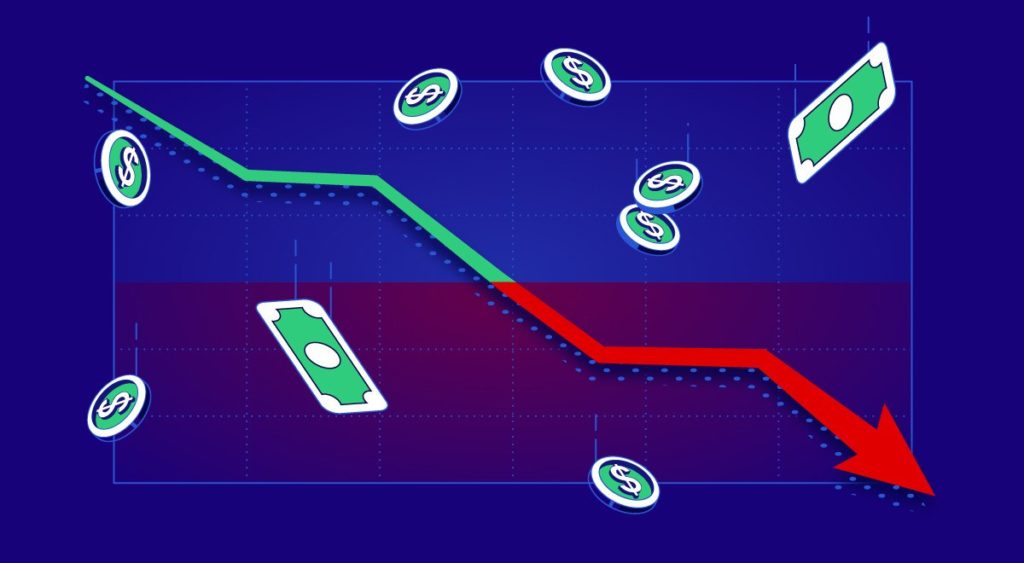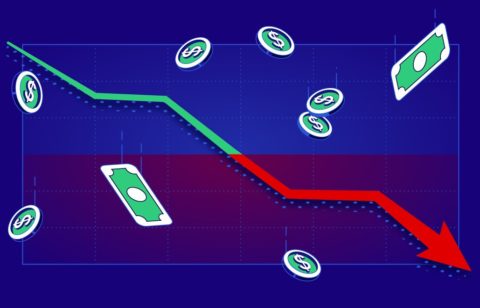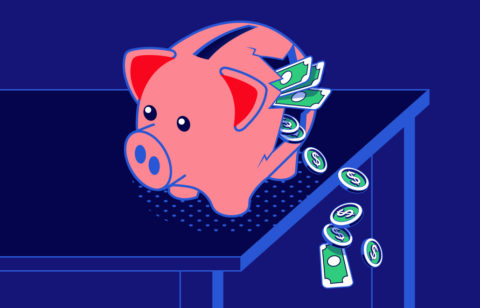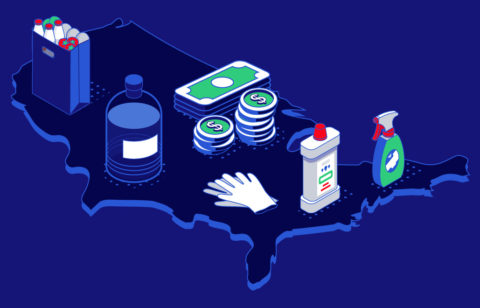Even if you regularly check your bank balances online, things happen. You could accidentally let your account go negative, and that can be costly and stressful. A negative bank account balance is obviously not a positive thing. One minute, your account balance is $200. The next minute, it’s minus $200. Ouch!
Rather than panic, stay positive. It’s important to act quickly to minimize any potential financial damage. Even better: You can do a lot to prevent a negative balance in the first place and avoid bank charges.
What Is A Negative Bank Account?
A negative bank account means you’ve got a negative balance. In other words, the balance in your bank account has dropped below $0. A negative balance is also called an overdraft.
Why Is My Bank Account Negative?
Generally, a negative balance or overdraft happens because you’ve spent more money than you have available by:
- Writing a check.
- Making an automatic bill payment or another electronic payment.
- Using your debit card to make a purchase.
- Withdrawing money from an ATM.
You may not be closely tracking your balance and end up spending beyond it. Or, an automatic bill payment goes out before your paycheck comes in.
Several other situations can lead to a negative balance in your bank account. Here are four more examples:
- You write a $750 check for your rent. When your landlord deposits the check, you end up with a negative bank balance because the amount of the check ($750) is larger than the amount of money in your account ($600, for example).
- You set up an automatic payment on a certain date for your cell phone bill. To help cover the $75 payment, you deposit a $100 check into your account. However, the money from that check doesn’t become available until after the money for automatic bill payment has been deducted from your account. In this case, your balance may become negative if the bill payment exceeds the amount of money you have in your account.
- You swipe your debit card at a restaurant to pay a $50 tab. But at the time, you don’t have enough money in your account to cover it. This could send your account balance into negative territory, depending on how your bank handles the transaction.
- You’re preparing for a night out with your friends and head to an ATM to withdraw $100 in cash from your bank account. However, only $80 is available. Under some circumstances, your bank might let you withdraw the $100, causing at least a temporary negative balance.
What Are The Consequences Of A Negative Bank Account?
The consequences of a negative bank balance can be costly and even affect your credit score.
If you spend more money than you actually have in your account, your bank may or may not cover your transaction, according to the American Bankers Association.
In the best-case scenario, the bank might cover the transaction and charge you an overdraft fee. A typical overdraft fee is $35. In effect, the bank is charging you a fee for a temporary “loan” to cover the transaction. Your bank may limit the number of overdraft fees that it charges per day.
A bank also might protect your account by automatically transferring money from a linked account at the same bank, such as a savings account, to your overdrawn checking account. They might also offer a line of credit that provides overdraft protection.
However, your bank also has the option to decline a transaction without paying it and charge you a non-sufficient funds (NSF) fee. A bank typically charges an NSF fee that’s the same amount as an overdraft fee. In addition to an NSF fee, a merchant (such as a grocery store) might impose a fee for a declined debit card purchase or your landlord might impose a fee for a returned check, for example.
The statistics can be startling. American consumers paid $12.4 billion in overdraft fees in 2020, according to a study from the Financial Health Network. That works out to roughly $48 for every adult in the U.S.
What Should I Do If I Overdraw My Account?
If you overdraw your bank account, you can take steps to ease the financial harm. Here are five of them.
Transfer money immediately
If you don’t have another account automatically linked to the account that’s overdrawn, try to transfer money from another account as soon as you can into the overdrawn account. This may prevent additional overdrafts, or extra overdrafts, or NSF fees. Make sure the transferred money covers both an overdraft transaction (such as a bill payment) and the overdraft or NSF fees.
Deposit money right away
If you aren’t able to transfer money from one account to another right away, figure out a way to deposit money into the overdrawn account. Perhaps you can scrape together enough money from the coins you keep in a jar at home or borrow money from a friend. If you realize soon enough that an overdraft is going to happen, the money you deposit may allow you to avoid overdraft or NSF fees.
Pay the fees
One of the worst things you can do is let overdraft or NSF fees go unpaid. If you don’t pay these fees, the bank might close your account, sue you or report the non-payment to a company that monitors checking and savings account activity. The unpaid fees may become part of your account history and may keep you from opening checking or savings accounts in the future.
Ask the bank to erase the fees
If you’ve otherwise been a good customer, your bank may waive an overdraft or NSF fee. But if you keep racking up these fees, the bank may not be so courteous.
Contact the recipient of the bounced check or overdraft transaction
If you wrote a check that bounced or made a transaction that your bank refused, reach out to the recipient as soon as possible. This way, you can smooth things over with a landlord, a restaurant, or whoever else was supposed to get your payment. They might even be willing to waive a fee that they had planned to charge.
Can I Still Use My Debit Card If My Account Is Negative?
The ability to use your debit card when your account is negative depends on whether or not you have overdraft protection. Your bank may automatically provide overdraft protection for an ATM withdrawal or a debit card transaction that sends your balance below $0. Or it might cover a withdrawal or transaction if you’ve signed up for overdraft protection. Either way, you’re likely to be hit with some sort of fee.
Tips To Avoid A Negative Bank Account
A negative bank balance can throw your finances off balance. There’s plenty you can do to prevent your balance from dropping below $0, however.
Be aware of due dates
It’s best to pay bills before the due dates, but only after your regular paydays or after other money is regularly deposited into your account. Some recipients of bill payments, such as credit card issuers, will let you adjust due dates to align with the times when money is coming into your bank account.
Link your accounts
Connect your main bank account to a savings account or another account. This way, you can transfer money when you realize your account is in the negative category or is about to head there.
Enroll in overdraft protection
You may be able to tie your main bank account to another account or even a credit card so that the bank automatically covers transactions that create a negative balance. Keep in mind, though, that your bank probably will charge a fee for overdraft protection coverage. However, this fee likely will be lower than a standard overdraft or NSF fee.
Set up direct deposit
Have your employer directly deposit your paycheck into your account, rather than depositing a paper check issued by your employer. This will give you faster access to your money.
Monitor your account
Always watch your account balance so that you know how much money you’ve got on hand. You can do this on your bank’s website or mobile app.
Sign up for alerts
If you were to opt-in for this service, some banks will send a text or email alerts when your bank balance goes below a certain amount (like $25).
Establish a budget
Setting up a budget can help you keep on top of your monthly income and expenses. This may help you avoid overspending and overdraft issues.
Start an emergency fund
Generally, experts recommend that an emergency fund contain enough money to cover three to six months of everyday expenses. You can tap into an emergency fund when you’re getting close to a negative balance in your bank account.
At National Debt Relief, we take pride in empowering people to regain their financial stability through our proven debt relief program. Contact us and talk to a financial expert who will work with you to find the best option to settle your debt and help you achieve financial independence.





